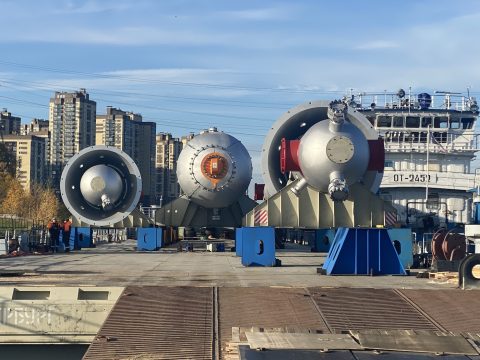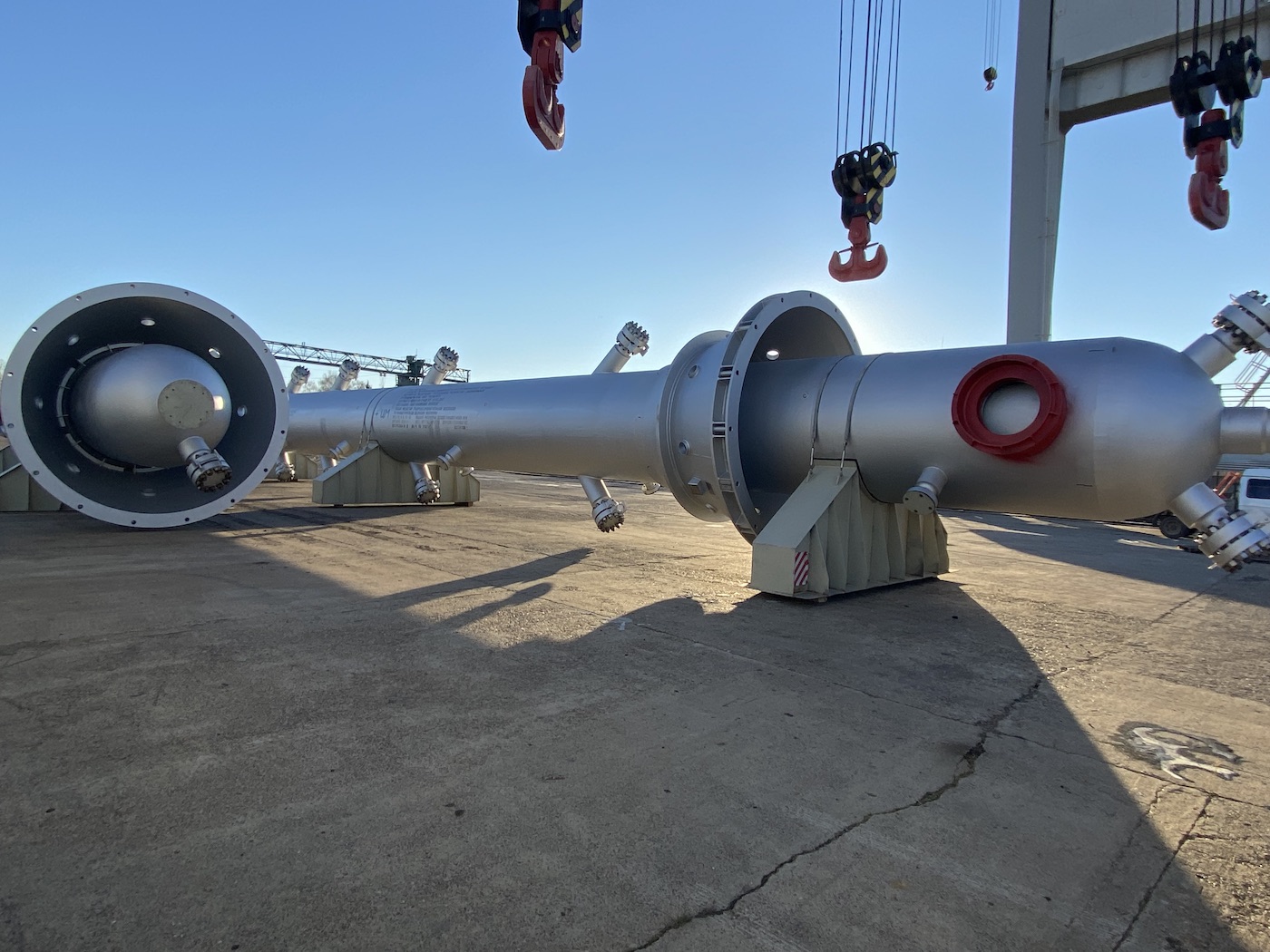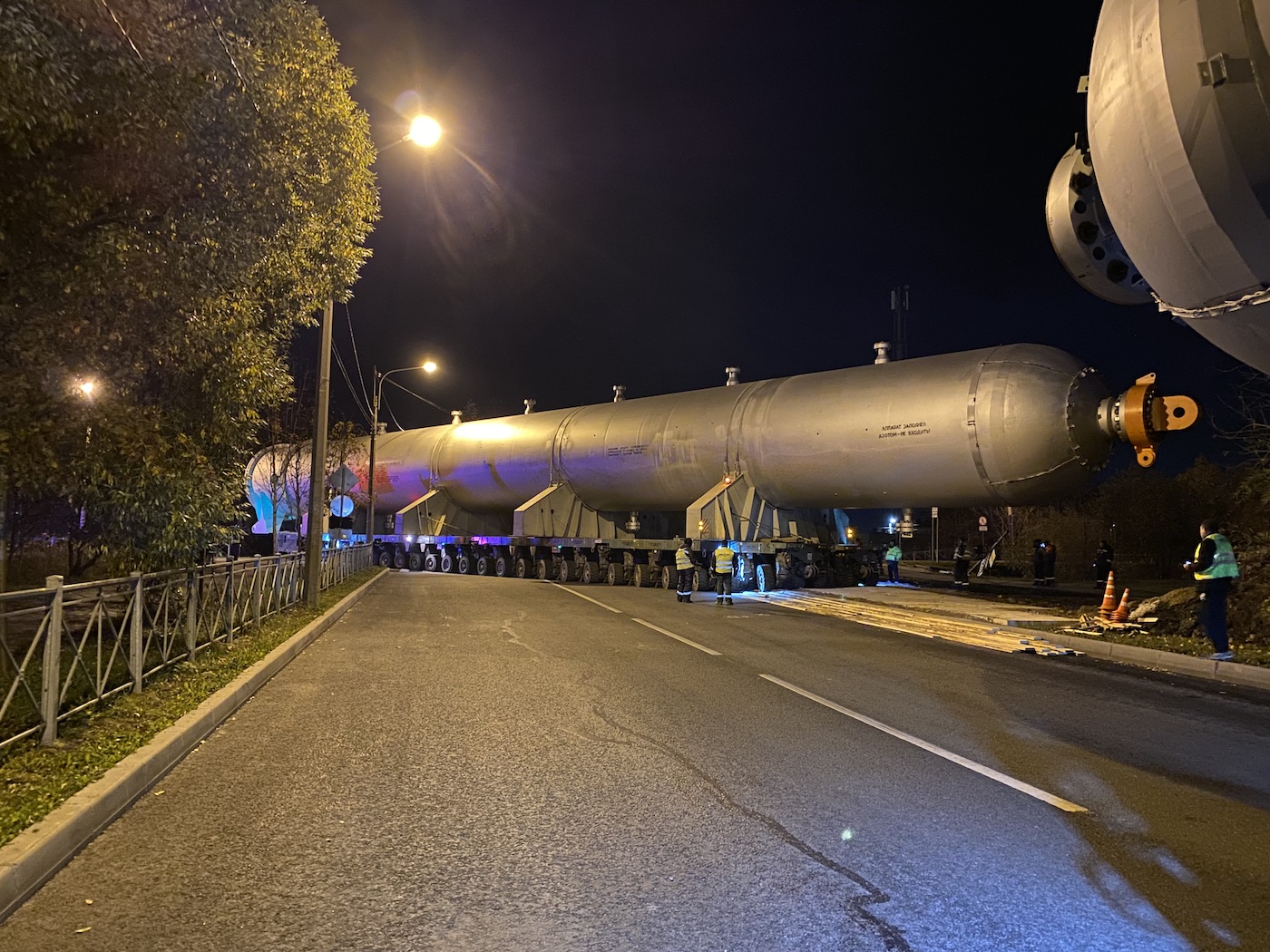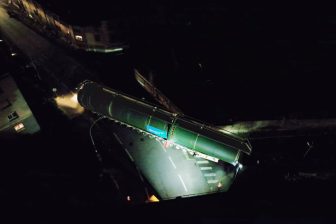
Reactors on a 1,700 km journey across Russia
Transporting oversized and heavy reactors has its limits and requirements that Barrus Projects recently had to tackle on a 1,700 kilometre trip from St. Petersburg to Nizhnekamsk. The company delivered a total of four reactors with the heaviest weighing 1090.1 tons and measuring 53.3 metres in length.
The units were transported from the PCJS Izhorskize Zavody manufacturing plant in Kolpino to PJSC Tatneft’s hydrocracking unit in Nizhnekamsk, Republic of Tatarstan. Delivery included two railway crossings, prepartion of the necessary infrastructure for the possibility of passing in curves, transportation by inland waterways using a barge towing arrangement, as well as the delivery of reactors on self-propelled hydraulic modular trailers in Nizhnekamsk.
Further challenge included the construction of a berth of the manufacturer on the Neva River to receive the largest barge shipment in history of the factory.

Reactors required multi-stage delivery
Barrus Projects completed the complex transport in several stages. The company informed that the first stage was the road transportation of the reactors on self-propelled hydraulic modular trailers from the manufacturing site to the berth located on the Neva River in the Ust-Slavyanka. Transportation was carried out at night over two consecutive days, completing the railway crossings, before delivering the cargoes to the berth.
The second stage was the loading of cargo by the RO-RO method onto a barge and their fastening in accordance with the project for the placement and fastening of UODC (unique over-dimensional cargoes). During loading of cargoes, the barge was ballasted almost continuously with the help of eight motor pumps.
The barge of the project Volgo-Baltika was chosen for simultaneous transportation on inland waterways of the whole volume of cargo, since it was suitable according to the parameters for the transportation. At the same time, according to the calculations made by the designer, who prepared the projects of loading/unloading and securing the cargo, it was necessary to upgrade the barge, which was done by the shipowner before the loading. Transportation from the berth on the Neva river to Nizhnekamsk by inland waterways was carried out in 20 days.

According to the concept of the project, the weight and dimensions of the reactors, the unloading in Nizhnekamsk was to be carried out at two different berths, using different methods. The hydrodearomatisation reactor weighing 236.1 tons and the dewaxing reactor weighing 108.6 tons were unloaded by crane to the berth of Transkama NJSC, and the reactors of the first and second stages were to be unloaded by the RO-RO method in the loading chamber of the Nizhnekamsk river port. Unfortunately, due to the low water level in the Kama river it was impossible to load the reactors of the first and second stages in the navigation period of 2021 because the low water level prevented from closing the watergate of the loading chamber. The reactors had to be left on the barge and put aside for the period between navigations at the berth of Transkama NJSC.
The hydrodearomatization reactor and the dewaxing reactor were delivered to Tatneft’s installation site and transferred to the consignee.
The first stage reactors weighing 1090.1 tons and the second stage reactor weighing 427.3 tons will be unloaded from the barge and transported upon the opening of navigation period in 2022.
Read also: Barrus wraps up wind turbine components transport in Russia
You just read one of our premium articles free of charge
Want full access? Take advantage of our exclusive offer




